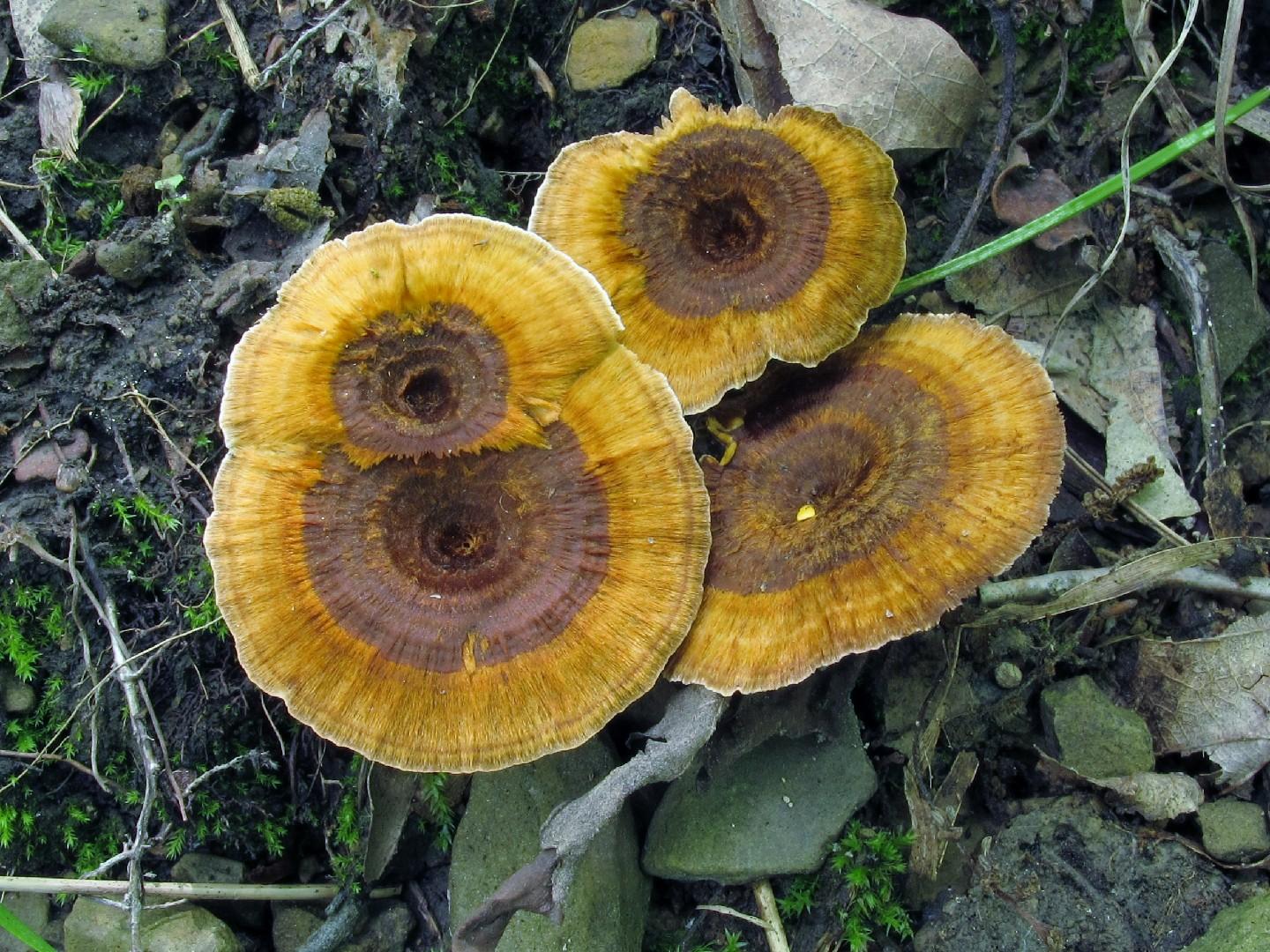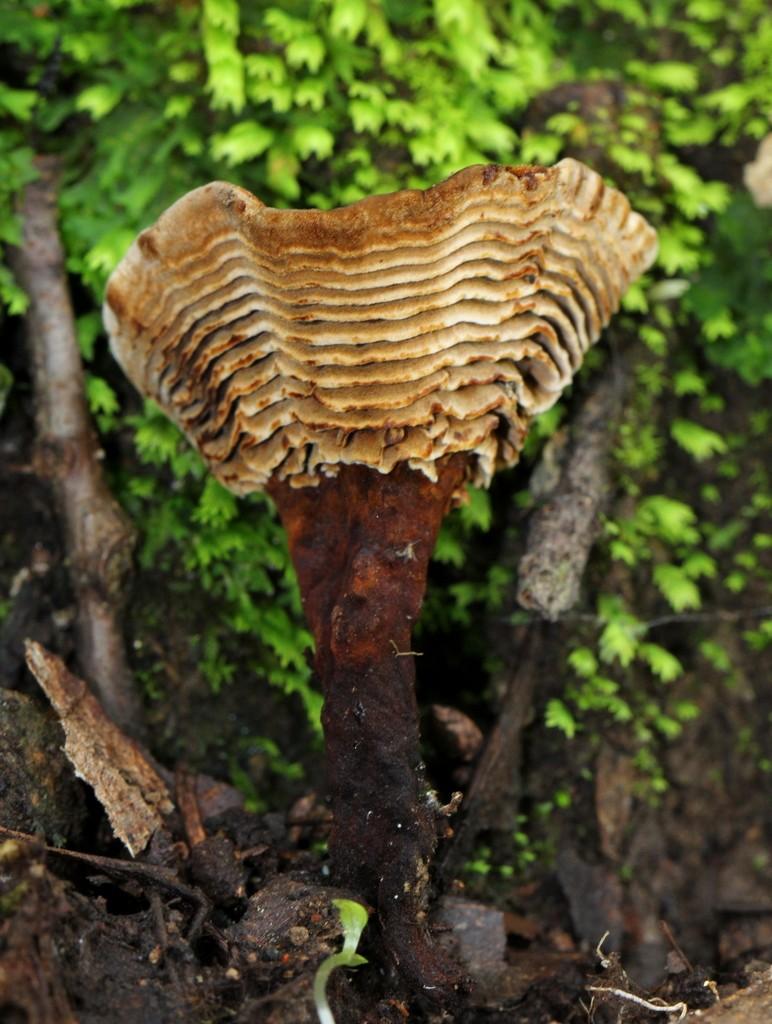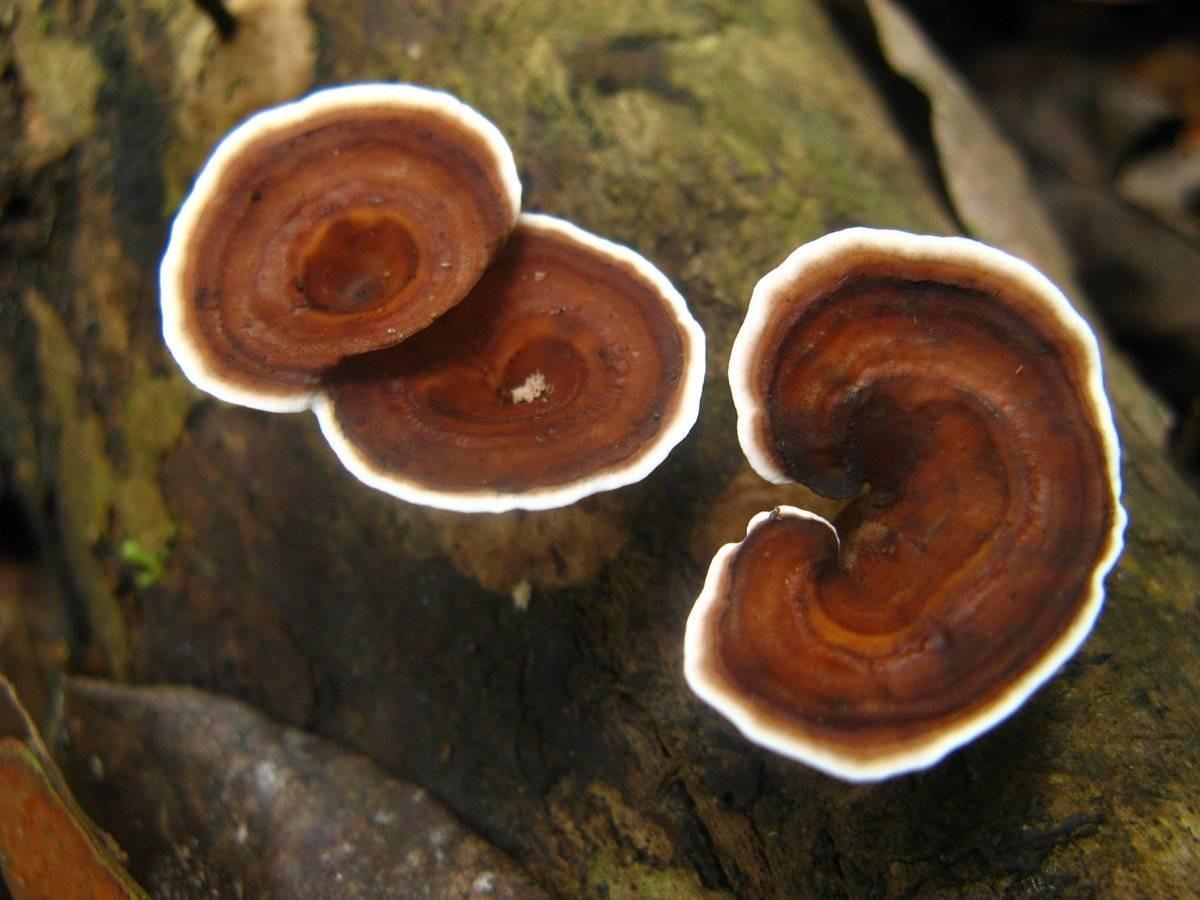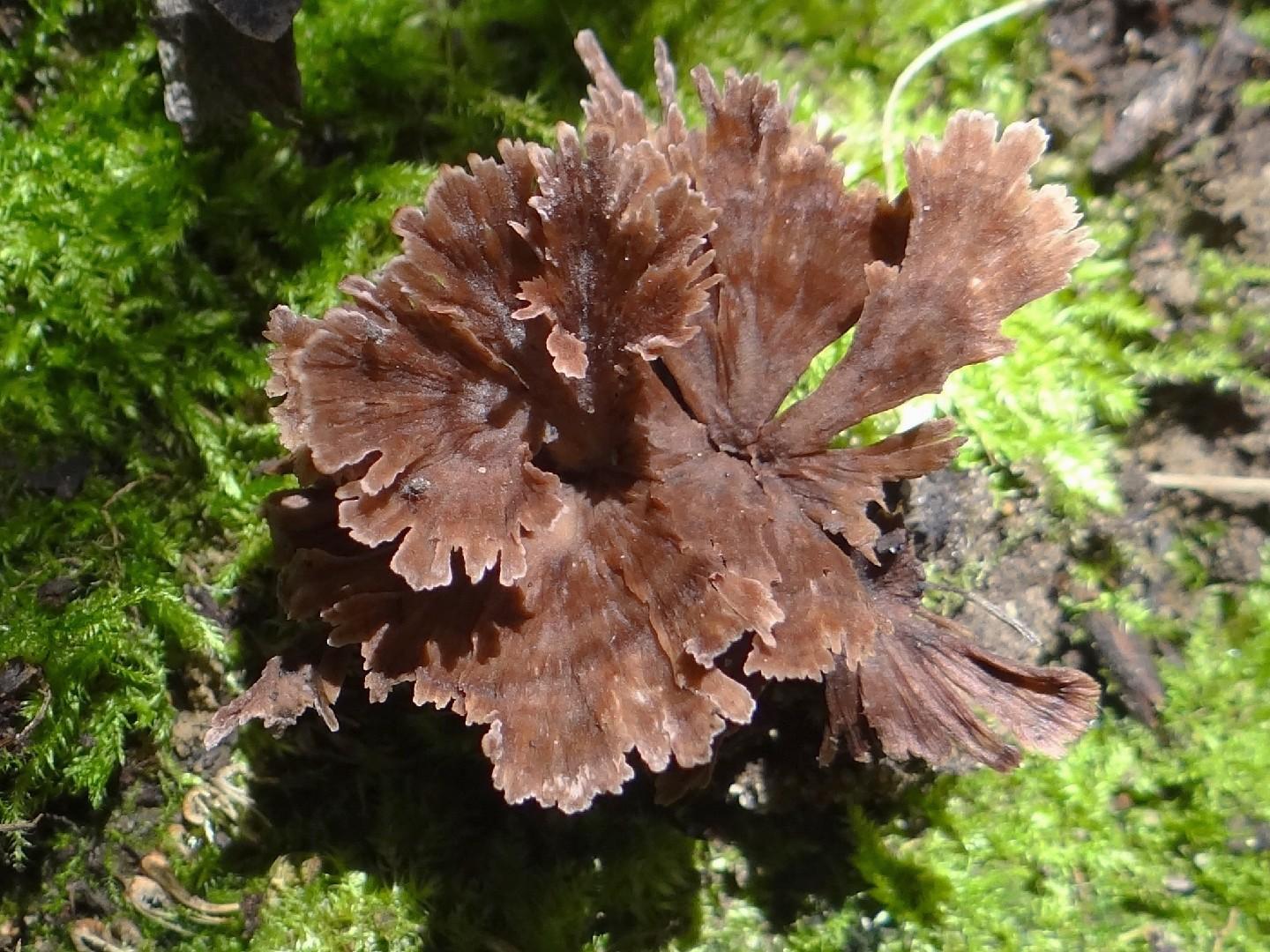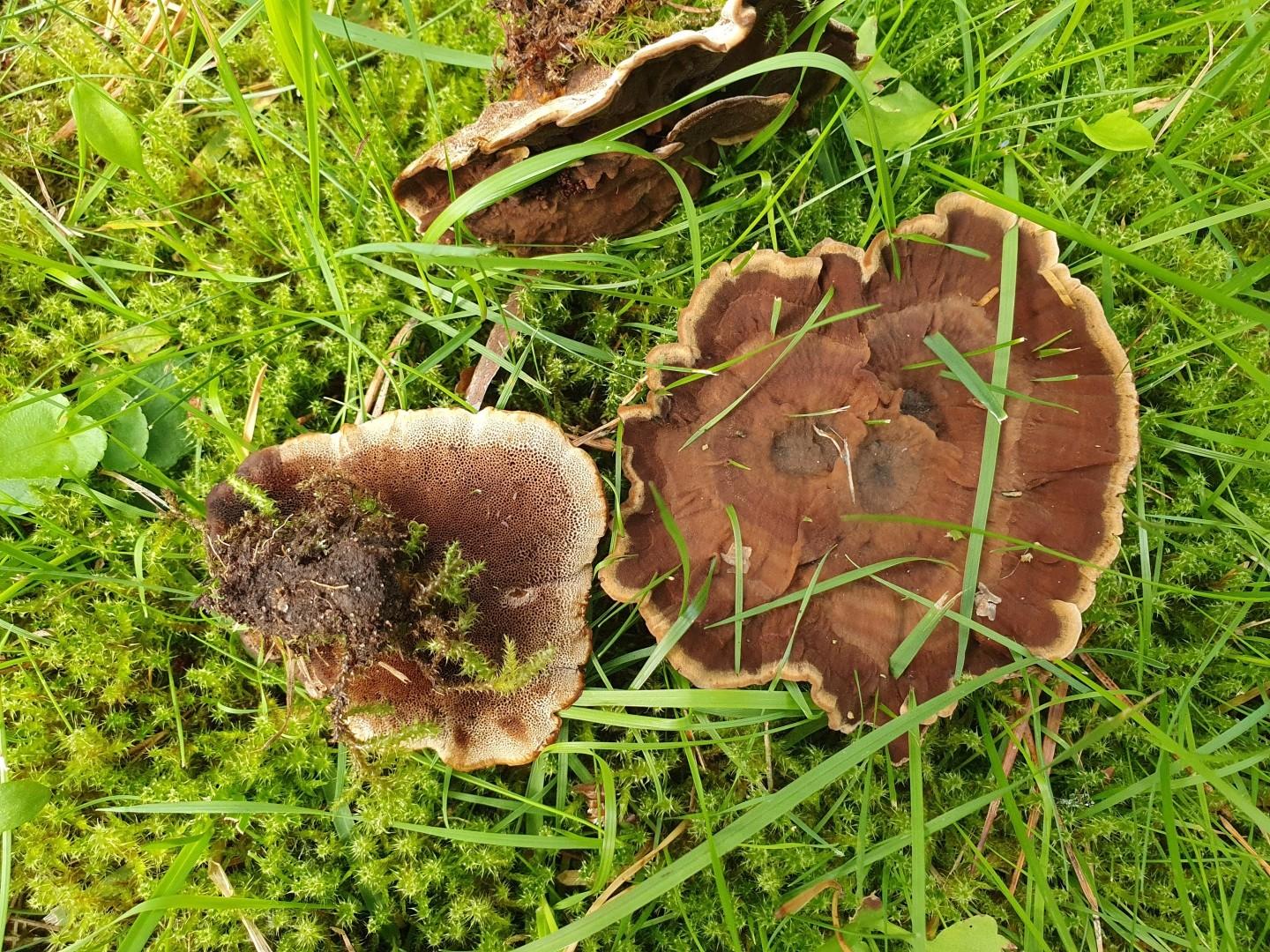

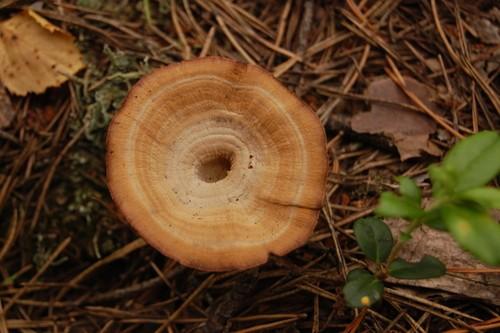
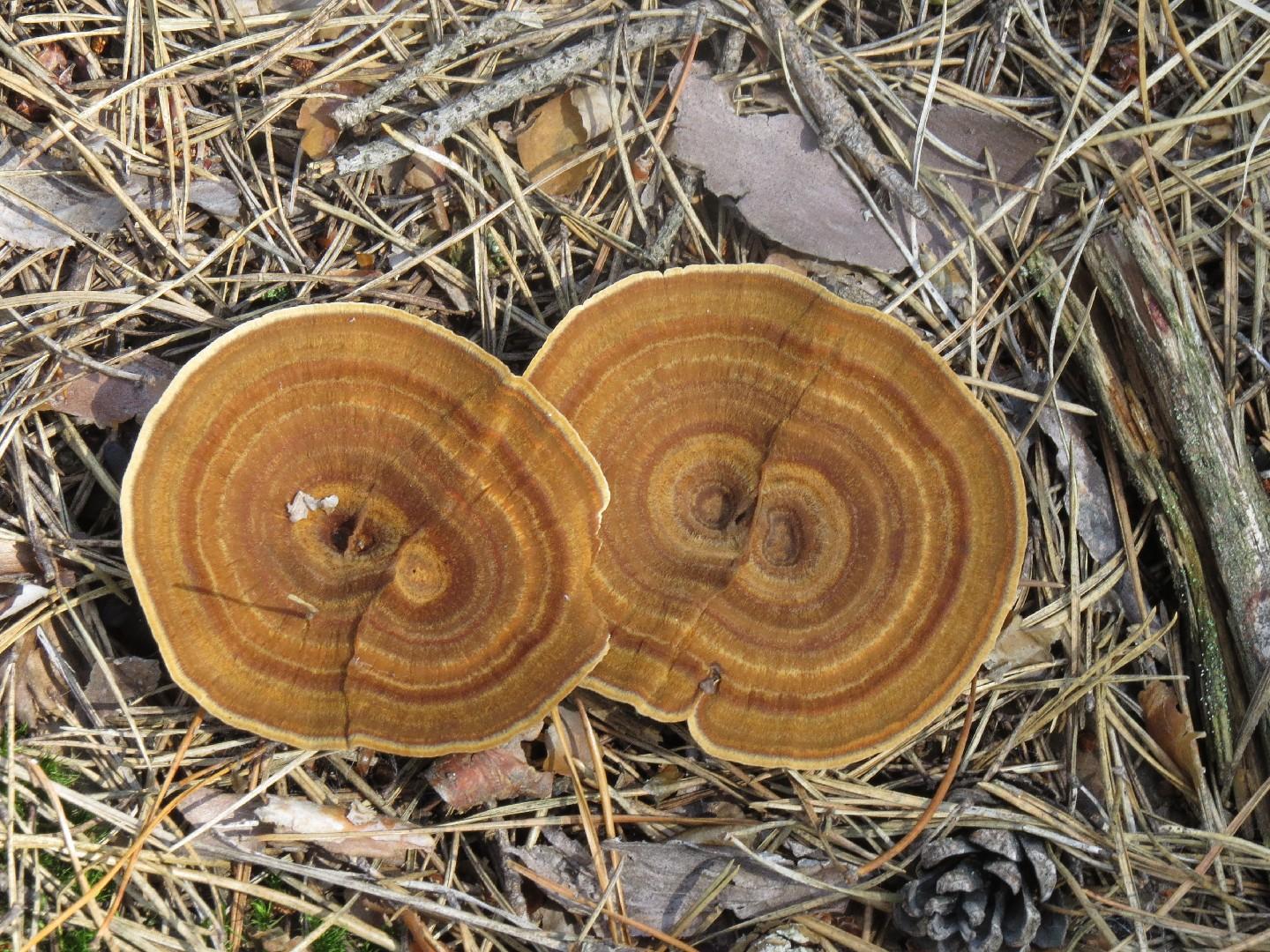
Tiger's eye
Coltricia perennis
A species of Tiger's eye fungus. Also known as After-burn polypore.
The tiger's eye, a striking small mushroom, features a resilient yet slender and fringed cap. Its namesake comes from its appearance; this fungus exhibits a swirling pattern of browns, tans, and burnt oranges, closely resembling the semi-precious gem known as a tiger's eye.
Attributes of Tiger's eye
Cap Diameter
3 - 10 cm
Height
2 - 5 cm
Cap
Cap 1 - 7 cm across; circular; brown; margin with a narrow white band
Cap Shape
Depressed, Flat
Cap Surfaces
Velvety, Fibrillose-scaly
Stem
Stem 5 - 50 mm long, 3 - 7 mm thick; round to compressed; orange-brown; velvety; surface tomentose to velutinate
Stem Shapes
Cylindrical
Stem Surfaces
Smooth to slightly fibrous
Flesh
Thin
Ring
Ringless
Spore Print Color
Brown, golden brown
Odor
Mild, undistinguished earthy scent.
Body Color
BrownBlackYellowGrayCream
Flesh Bruises
The flesh or milk does not discolor when bruised or cut.
Growth Form
Solitary, Gregarious, Clustered
Nutrient Gathering
Saprophytic
Substrate
On soil
You can find Tiger's eye by these plants
Spruces, Pines
Occurence Habitats
Coniferous Woodland, Disturbed Lands
Endangered Species
No
Scientific Classification of Tiger's eye
Phylum
Club fungi
Class
Mushroom-forming fungi
Order
Hymenochaetales
Family
Hymenochaetaceae
Genus
Tiger's eye fungus
Toxicity and Edibility of Tiger's eye
Is Tiger's eye Toxic?
Toxicity information is not available for this mushroom. Always consult with an expert before consuming any wild mushrooms.
Is Tiger's eye Toxic to Dogs?
Tiger's eye can be dangerous to dogs. If your pet has consumed this mushroom, seek immediate veterinary attention. Symptoms may vary, but early intervention is crucial for the best outcome.
